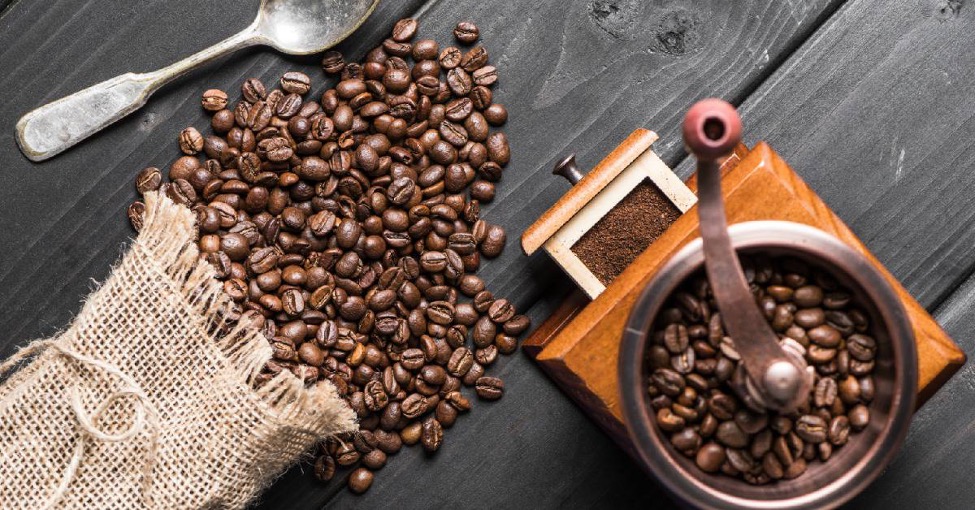Well, you’re at home, you’ve purchased a bag of coffee, and you’re looking forward to inhaling the delicious, crisp fragrance as the coffee brews. You open the coffee bag and suddenly start to panic. Rather than coffee grounds, you purchased coffee beans! Don’t worry because this can happen to anyone.

You suddenly crave a cup of fresh coffee, and you want it now, but that’s the only coffee you got! You won’t be able to produce ground coffee because you don’t have a grinder.
Fortunately, we’ve written a comprehensive guide about how to grind beans without using a grinder. We’ll also go over the various types of coffee grinds and their most popular applications. Bear in mind that multiple methods will produce different outcomes; most will create finer grounds, while others will make coarser grounds. Be patient with the process, and you’ll make your coffee. Read more about the benefits of drinking it on this link https://www.healthline.com/nutrition/top-13-evidence-based-health-benefits-of-coffee.
If own a coffee grinder, obviously use it. Keep reading below for the rest! Most of us have blenders and food processors in our kitchens. Crushing them is an easy job if you have one of these. But you can’t just throw the beans in and mix it like a smoothie; instead, read on for our plan.
Try a blender
It’s easy to get what you want to a decent consistency with a blender. Bear in mind, though, that there is no way of making the grounds the very same size. However, you’ll always have a usable consistency.
Some blenders have a “grind” mode but don’t worry if yours doesn’t. You’ll want to use the “pulse” setting or manually blend the them.
Blending produces heat, which can cause the beans to “cook” while you’re blending them, which you don’t want! Since they can burn, the entire grinding process must take no more than 20 seconds, maybe 30 seconds, if you really want it!
Food processor
This is, like the blender, one of your better choices. Of course, this method will not be as strong as a standard grinder, but it will suffice in a pinch!
You will definitely achieve a similar result to a blender. Still, you’ll need more beans because the food processor’s diameter usually is wider than a blender’s. Doubling the number of coffee should suffice – and if there are just two of you, you’ll have plenty for tomorrow! Only make sure the remaining grounds are sealed in an enclosed plastic container. Read more on this page.
How to hand-grind beans
If you don’t have a food processor or a blender, you’ll have to grind them by hand. You don’t have a grinder, and you don’t have any other mechanical appliances. Therefore, you need to get this down with your hands! This approach is entirely up to you.
Food processors and blenders can only get you so far, and none of them will produce ultra-fine grounds, which is where hand grinding beans come in.
Only keep in mind that these methods can take longer than using a food processor or blender. To achieve them, you’ll need a little grit and perseverance.
Pestle and mortar
Grinding with a mortar and pestle can take a lot of effort and time. To avoid overflow and the components hopping out, make sure you use about 14 to 13 percent of the power of your mortar. This method often produces fewer grounds than the one mentioned above, so be prepared to make more if necessary!
Thicker grounds for drip coffee or Chemex coffee and coarser grounds for French press one can be made with a mortar and pestle. It’s based on how big you grind your beans and how tightly you grind them. To create a more consistent mix, grind the beans in small quantities.
Rolling pin
Still, figuring out how to grind coffeebeans to perfection? In that case, you can also use a rolling pin. Eve household has at least one rolling pin in the kitchen. Since the grounds for French press coffee should be coarser than those for drip coffee, this method would work better. It’s also time-consuming, but it’ll get you the answers you need in a hurry.
Putting the components in a plastic bag is the best way to grind them with a rolling pin. You won’t have any stray ones floating around your house as you ground them down this way.
Make use of a hammer
The use of a hammer is a convenient way to ensure that the beans are thoroughly crushed. It’s also not too time-consuming. The grounds will get finer and finer when you start breaking down the beans.
Place them in a bag and smash them, similar to how you would with a rolling pin. You should apply medium or low pressure to reduce the chance of the bag popping when grinding your beans. You shouldn’t hit the bag with a lot of effort like you would a nail.
Garlic press or hand mincer
This method is not the same as using a grinder to grind beans, but it is very convenient. The beans are squeezed out of the area where garlic, beef, or other food is stored.
One of the most noticeable problems is that the gaps are typically very large, resulting in a larger, coarser ground. This process might need to be repeated or combined with a hammer or a rolling pin.
You can really only grind a tiny portion of beans at a time with the hand mincer. Put a few whole coffee beans through the mincer or press, then collect the grounds and put them through the mincer or press again, or as many times as necessary to get the kind of grounds you want.

Leave a Reply